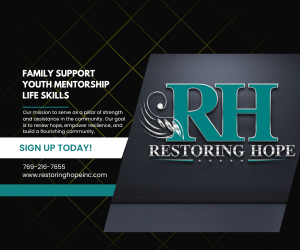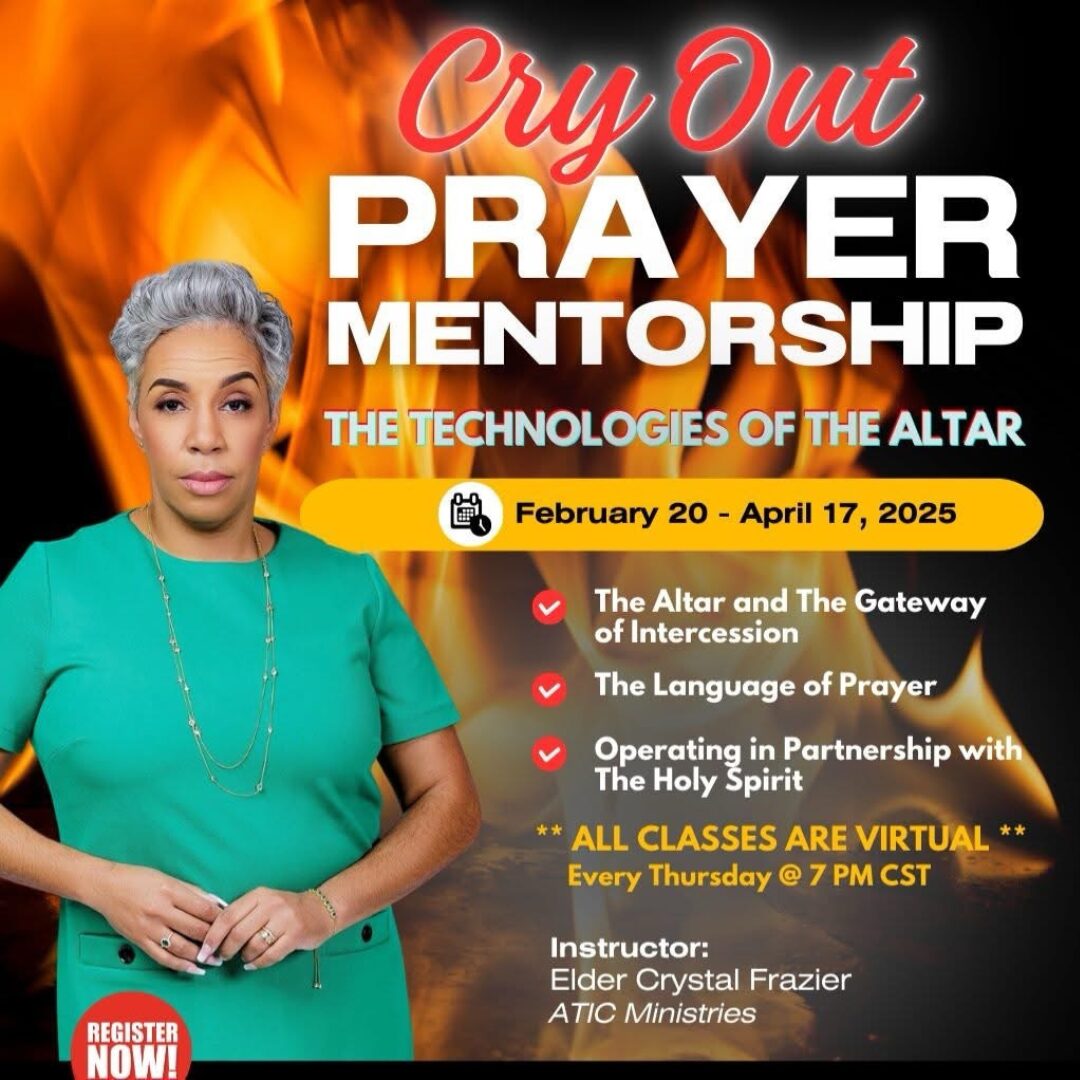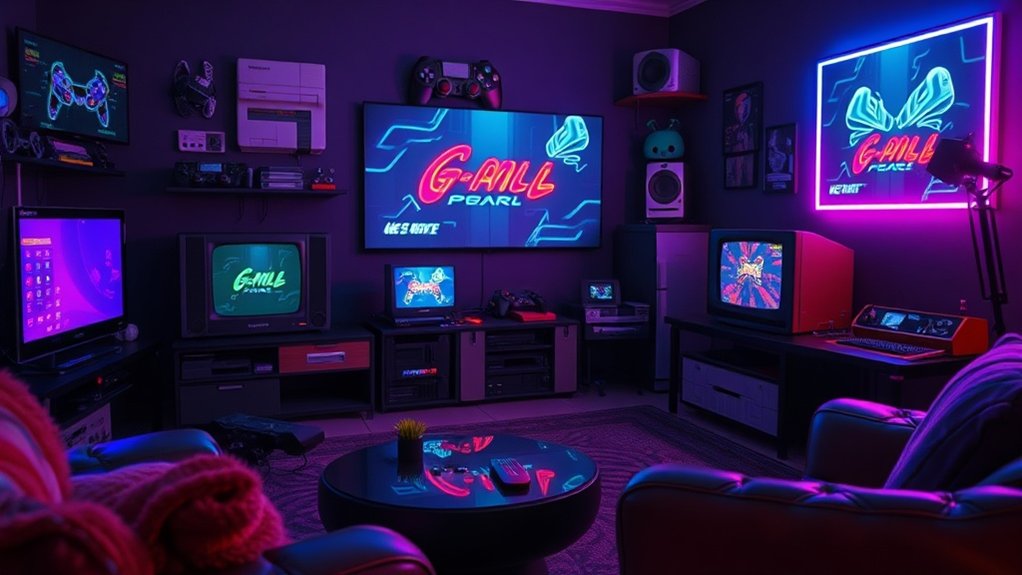
This content has been republished, rebroadcast, and/or edited under the Creative Commons Attribution license (CC BY), which allows reuse, remixing, and redistribution with proper credit to the original creator. It has been enhanced by UUN for educational, entertainment, and archival purposes, which may include the addition of on-screen graphics, ads, narration, or presentation formatting. — Original Creator: [Channel or Name] • Source Video: [Hyperlinked • YouTube URL] • License: CC BY 4.0 • Content acquired: [insert date]
This week, on Viewpoints. If you haven’t been to your local school in a very long time, you have no idea what’s going on there. It’s part two of our Back to School series.
We take a closer look at the challenges and progress happening in classrooms. Then… A housing shortage simply does not allow Americans to find homes to allow them to live safely, whether they want to uproot and move or not. Why are so many seniors struggling to find the right homes? I’m Marty Peterson.
And I’m Gary Price. These stories in-depth this week on your Public Affairs magazine, Viewpoints. Success is picking up extra shifts for your family.
Now you want to be the boss. Success is getting your foot in the door. Now you want to take the next step.
Success looks different to everyone. And University of Maryland Global Campus can help you reach your goals. And there’s never been a better time to get started on your future.
No application fee if you apply by September 3rd. As an accredited state university, UMGC has been transforming lives for over 75 years. With more than 135 undergraduate and graduate degrees and certificates, online and hybrid courses, personalized support, financial resources, and lifetime career services, achieving your dreams is more possible than ever before.
Choose the program that’s right for your career goals and get started on your next success. No application fee if you apply by September 3rd. Learn more at umgc.edu. That’s umgc.edu. Certified to operate in Virginia by SHEV.
Last week on Viewpoints, we looked at how phones and social media are shaping today’s classroom. But technology isn’t the only uphill battle schools are facing. This week, we continue our Back to School series with Part 2, a look at the other pressures teachers and principals juggle as students settle into the classroom.
Because teaching has never been just about books and lesson plans. Ask any educator and they’ll tell you that the role stretches beyond academics and the regular workday. I know more teachers than not that work all summer.
You know, we have professional development that started in June, goes through July, goes through August. Teachers that are taking grad school classes because they have the time now and they don’t have it during the year. I teach summer school.
I taught summer camps all through the district. I’ve led professional development. I’ve attended professional development.
So it’s not like, you know, us teachers are starting work the first day of school. We started a week or two before that, unpacking, cleaning, preparing, getting ready for the kids, making sure I have everything for them. That’s Lindsay, a fourth grade elementary school teacher in the Chicago suburbs.
For this story, she’s not sharing her last name so she can speak openly while still maintaining her privacy. She’s been teaching for a little under 10 years now and says that every year is different and comes with a new set of focuses. I’m already stressed about making sure that my students are going to hit their MAP scores, making sure that I am having curriculum that’s good for them, that’s the best for their learning, making sure I have the tools that students need, whether they have ADHD or any kind of other learning disability.
We’re starting a new reading curriculum. So that’s like a whole new thing that we’ll be teaching this year in a completely different way than we’re used to. So it’s, we always say in the teaching world that once the 4th of July passes, like teachers, we’re already back into it, you know, and August is like the Sunday, the Sunday of our summer and we’re August 1st, where it’s basically the first day of school, even if it’s not.
This often hectic introduction back into learning and testing isn’t just happening in Lindsay’s classroom, but in schools across the country. Kathleen Corley, a longtime educator and principal at Red Cedar Elementary in Bluffton, South Carolina, Corley says there’s been a lot of positive change and progress in schools since she started teaching in the 90s. Sometimes it can be easy to fixate on all of the negatives like student phone use and low testing scores, but there has been a lot of progress.
I think the biggest challenges back when I started as a principal was to make sure everyone was on board with what we were trying to do. That is, that all the teachers were trained in what was best practice for getting even the most reluctant students to learn, even the most learning disabled students to learn, even the students who came from the most difficult circumstances to learn, and to help get the parents on board to help us to be partners with us. Today, many schools in the U.S. also have more specialized support staff and resources than 10 or 20 years ago.
We ran on a bare bones staffing personnel group. There were large class sizes, I’ll say large, meaning high 20s, 23, 24, 25 students in a class with no assistants, meaning paraprofessionals, in the rooms to help except for in kindergarten. There was a nurse, but she wasn’t a certified nurse.
She was a paraprofessional herself. She gave medicines. So they say follow the money when you want to know what somebody really cares about.
Well, what we cared about, what our bosses and the board cared about was teaching the children in the classroom. The playground equipment was not so good. The desks dated back almost to when I was in school.
We did have desks in 1990 that still had inkwells. Things didn’t get replaced. Things didn’t get repaired.
I’m not complaining about Lynchburg City Schools. It was like that in lots of places. These resources still need improvement, but compared to those earlier years, many schools now have access to reading specialists, interventionists, and mental health professionals on site.
These additional employees share the weight the teachers used to carry alone. Corley says that this added support is critical right now as schools continue to face heightened behavioral challenges and lingering ripple effects from the COVID-19 pandemic. I don’t want to forever blame COVID for anything.
And here comes the but. But it was much harder to get most of these children to understand the difference between respect and disrespect of themselves, of each other, of their teachers. And these issues from the pandemic also carried over into academics, especially delays in reading comprehension, English, and math.
In recent years, Corley says there’s been an uptick in the number of children who have needed to attend summer school to get extra help. It’s hard for us to teach as we would, building on what last year’s teacher did. If last year’s teacher was mostly mom or not anybody, I’m not dissing mom.
Please, we need all the moms and dads and uncles and siblings and everyone to help and to show children that reading is fun, reading is important. You get this down. You can do anything in the world.
And by the way, you’ll enjoy it as well. But if there was no structured reading program and we did the best we could, which is all I can say for the COVID times. Teaching today isn’t without its hurdles, from the lasting impacts of COVID to challenges that existed long before.
But for many educators, the rewards still outweigh the setbacks. Every fall new students walk through the door, and every spring they leave a little different with new skills, new confidence, and much more that can’t be put into words. To find out more about this topic and our guests, Kathleen Corley and Lindsay, visit ViewpointsRadio.org. For more behind the scenes and to support our show, check out Viewpoints Radio on X, Facebook and Instagram.
This segment was written and produced by Amira Zoveri. Our studio manager is Jason Dickey. I’m Gary Price.
Coming up, why gaining accessibility at home is the next big hurdle for millions of Americans when Viewpoints returns. If Old Spice Deep C Super Hydration Body Wash were music, what would it sound like? Start with the deep sounds of Old Spice’s ocean waves and kelp. Layer on the smooth, renewing moisture.
You wouldn’t hear any parabens or phthalates because Old Spice Deep C hasn’t got any. But you would hear that vitamin B3 for healthier looking skin. So while your regular body wash sounds like this, Old Spice sounds like this.
Sounds like it smells amazing. Success is picking up extra shifts for your family. Now you want to be the boss.
Success is getting your foot in the door. Now you want to take the next step. Success looks different to everyone.
And University of Maryland Global Campus can help you reach your goals. And there’s never been a better time to get started on your future. No application fee if you apply by September 3rd.
As an accredited state university, UMGC has been transforming lives for over 75 years. With more than 135 undergraduate and graduate degrees and certificates, online and hybrid courses, personalized support, financial resources, and lifetime career services, achieving your dreams is more possible than ever before. Choose the program that’s right for your career goals and get started on your next success.
No application fee if you apply by September 3rd. Learn more at umgc.edu. That’s umgc.edu. Certified to operate in Virginia by Chev. Behold the Colonel’s Giant KFC Chicken Sandwich.
A towering, extra crispy monument to flavor. Such a huge amount of juicy, hand-breaded KFC chicken at a pretty tiny $3.99 price. For the Colonel’s KFC Chicken Sandwich.
I mean $3.99 isn’t even worthy of the same epic soundtrack as the KFC Chicken Sandwich for only $3.99. The Colonel lived so we could chicken. Prices and participation vary while supplies last. Taxes, tips, and fees extra.
As the American population gets older, many people are asking this question. Will I be able to stay in my own home as I age? For a large chunk of the population, this question hangs heavy. With the cost of housing, home maintenance, and renovations quickly rising, many people on a fixed income are struggling to keep up and aren’t seeing any relief in sight.
Over a third of older households are what we call housing cost burden, meaning that they are spending more than 30% of their income for housing and half of those folks are spending over 50% of their income on housing. So that is a significant issue. We have more and more older homeowners entering their 80s and beyond with mortgages, which can be very difficult on a fixed income when our income that is declining.
Also renters, the same story of rising rents but fixed incomes. That’s Jennifer Malinsky, Director of the Housing and Aging Society Program at Harvard University’s Joint Center for Housing Studies. She says that affordability is one of two major housing challenges facing our aging population.
The other? Accessibility. Right now, many seniors live in homes that aren’t safe or accommodating to their needs. By our estimation, less than 4% of the U.S. housing stock has a no-step entry, single-floor living, and wide enough hallways and doorways that could accommodate a wheelchair.
Less than 1% is thought to be wheelchair accessible. That’s a problem because mobility difficulties increase with age and we’re set to see a rapid expansion of people in their 80s and over and not being able to navigate or use certain features of your house or indeed get in and out of the house easily can present safety risks and it can also lead people to need to rely on other people for something that they might otherwise be able to do themselves, like laundry or cooking. By the time adults reach their 70s, 80s, and 90s, it’s common to need additional fixed structures, such as ramps, chairlifts, or grab bars to get around and reduce the risk of falls.
So why don’t more seniors make these upgrades? Malinsky says it’s not about persuading people to add them. The real issue is cost. For the average American, retrofitting their home to improve accessibility is far out of reach.
On average, American homeowners spend about $5,000 to make their home wheelchair accessible, and this is just basic, basic adding ramps. There are some minor upgrades, such as adding grab bars or rocker switches that are more ergonomic in terms of physical mobility with your hands, and those can cost as little as $200 to $500 for each intervention. But major renovations, like ramps and stairlifts and widening doorways and especially bathroom conversions, range anywhere from $7,000 upwards to $25,000.
Full, comprehensive remodels could run easily up to $50,000 or more if you start altering major aspects of floor plans. Things like adding elevators can escalate that even more. That’s Lisa Sundahl-Platt, assistant professor of interior design at the University of Florida’s College of Design, Construction, and Planning.
Though many Americans are deeply attached to their homes, for some, moving feels like a safer option than staying in a house that no longer meets their needs. Plus, with seniors already spending the majority of their income on housing, downsizing could significantly reduce that expense. On paper, moving may sound like an easy solution, but in today’s market, it’s anything but.
Many seniors are looking for one-story, ranch-style homes, but with low supply in the housing market, these layouts are some of the hardest to find. Right now, about 60 million Americans are documented as living with some type of disability, and about 20% of the population in the U.S. are over 65. So the demand for accessible housing massively outpaces the supply.
A housing shortage simply does not allow Americans to find homes to allow them to live safely, whether they want to uproot and move or not. Many people are either forced to modify their existing home, and this can be at considerable personal expense, or just continue to live in spaces that don’t support their physical, emotional, or social well-being. Along with these concerns, living in a non-accessible home greatly increases the risk of accidents and injuries later in life.
For those who live alone or without a caretaker, a single fall can be extremely dangerous and even life-threatening. These injuries can also lead to a revolving door of dependency on professional rehabilitation care. One of the things we’re seeing, especially for people over the age of 60 who live in homes ill-suited to support mobility challenges, can be accidents in the home.
Falls are one of the major reasons why older adults end up in the hospital and continuing care. And this can be a major drain on health infrastructure because, obviously, if you have older populations in certain communities and homes, as we know, which are ill-suited to support their changing physicality needs, that becomes a vicious cycle. The other issue with that is more older adults ending up in long-term continuing care, and that can be really a very dramatic, life-changing experience.
Care homes across the country are already understaffed and overcrowded, and adding more residents would only make the problem worse. Beyond this, losing autonomy, independence, and freedom of choice is an extremely difficult transition. In order to lessen the risk of going down this path, Molenski recommends these resources that can help seniors retrofit and update their home at a lower cost.
There are quite a few home repair and home modification programs out there. There can be a few barriers to accessing them. One, people may not know they exist or not know how to begin, not know where to turn.
And then if you’re trying to hire a contractor, not know who to trust. And two, cost can be an issue. So some of the resources that do exist include public and non-profit programs, so Habitat for Humanity, Rebuilding Together, other non-profit organizations do aging-in-place work in addition to repairs.
There are state programs that offer assistance for remodeling to accommodate someone with a disability. And there’s a searchable list for those interested at homemods.org, so you can sort by geography and look for resources in your location. And for those who can afford it, Molenski encourages making home modifications well before there’s an obvious need.
Too often, homeowners realize changes are necessary after an accident or fall. By upgrading ahead of time, you’re not in a time crunch, and these safeguards are already in place when mobility needs begin to shift. I think the other thing that we can do is to help people get ahead of these needs is when other work is happening on the house, say you’re redesigning your bathroom or you have to open up the bathroom walls for some reason, some repair reason, because you’ve had a flood or whatever, that’s the time to put in the blocking for the grab bars.
You don’t even need to put the grab bars in, but you put in the wood blocking so that it’s much easier to do it later on. So just start thinking ahead and think earlier about things being more adaptable as your needs may change, because it’s going to be less costly that way, and then it will be much easier to do if the time comes. And oftentimes people experience the need for an accessible home in a rather emergency way.
They fall and they break their ankle or they’re coming home from the hospital and the home isn’t ready. So getting ahead of that, I think, is something that homeowners can do and also something that contractors can help their clients think about when they’re doing other work. Platt also suggests researching non-slip flooring options and adding accessible handles to cabinets to reduce the risk of falls.
And one simple, no-cost step? Clear out the top shelves so you no longer have to climb a stepstool. And while these changes can greatly improve the quality of life for older adults, it’s important to remember that the disability community needs these accommodations too. By making upgrades now and advocating for more funding and support for accessible housing, we can better prepare for aging and the possibility of an unexpected disability.
Although a lot of this is attributed to older adults, this is a phenomenon that can impact anybody at any stage of their life. If somebody has a major health event or an accident and all of a sudden finds themselves in a living environment that doesn’t meet their needs, the same issues can transpire because of a lack of thoughtful, universal design as it’s applied to homes. And I can tell you, that is a real opportunity for improvement is understanding how we design homes in a way that truly are resilient and supporting human health and well-being.
Because right now, that is really not happening. To find out more about Jennifer Molenski, Lisa Sundahl-Platt, and all our featured guests, visit ViewpointsRadio.org. For more behind-the-scenes and to support our show, follow us on Facebook, Instagram, and X. This segment was written and produced by Grace Galanti. Our executive producer is Amira Zaveri.
Our studio manager is Jason Dickey. I’m Marty Peterson. Viewpoints returns in just a moment.
Success is picking up extra shifts for your family. Now you want to be the boss. Success is getting your foot in the door.
Now you want to take the next step. Success looks different to everyone, and University of Maryland Global Campus can help you reach your goals. And there’s never been a better time to get started on your future.
No application fee if you apply by September 3rd. As an accredited state university, UMGC has been transforming lives for over 75 years. With more than 135 undergraduate and graduate degrees and certificates, online and hybrid courses, personalized support, financial resources, and lifetime career services, achieving your dreams is more possible than ever before.
Choose the program that’s right for your career goals and get started on your next success. No application fee if you apply by September 3rd. Learn more at umgc.edu. That’s umgc.edu. Certified to operate in Virginia by SHAV.
This is Viewpoints Explained. I’m Ebony McMorris. Over the past two years, millions of Americans have called for sweeping reforms in law enforcement.
While this has led to some new policies and improved training, there’s still a lot of work to be done. One issue that’s rarely talked about is the lack of women in the sector. After all, the main duty of the police is to protect and serve the public.
This is easier to do when officers are a reflection of the community that they’re in. Women currently make up only 12% of all officers and hold just 3% of leadership positions in law enforcement. A new project called 30 by 30 aims to boost this number.
The goal is to have 30% of police recruits be women by 2030. Founders of the initiative hope that this infusion will create a wider range of perspectives as departments across the country improve their policies, culture, and community interactions. In fact, research from 30 by 30 shows that female officers are generally trusted more than their male counterparts in low-income neighborhoods and communities of color.
So far, almost 200 law enforcement agencies have signed on to the initiative. Hopefully, this change is one step in the right direction. That’s Viewpoints Explained for this week.
More in a moment. Welcome to Culture Crash, where we examine what’s new and old in entertainment. There is magic in seeing movies on film.
In our current digital world, virtually every movie you see at your local theater is presented digitally. And sure, it does the job just fine. But every once in a while, especially if you live near a big city, you can find on-film movie presentations.
And you’ll likely feel the difference immediately. Every summer in Chicago, I get spoiled when the Music Box Theater hosts its 70mm Film Festival, showing old and new classics in 70mm, the largest of the pre-IMAX film formats. This year, I managed to see Christopher Nolan’s Dunkirk, Quentin Tarantino’s Once Upon a Time in Hollywood, and David Lean’s 1962 Best Picture winning Lawrence of Arabia.
The classic look and feel of a movie on film, which provides more detail, grain, and photochemical magic than a digital projection, seems to help keep an audience more entranced. Now, whether that’s because of the light quality, the 24 frames per second rate, or just a good old-fashioned placebo effect, I’m not sure. But my anecdotal experiences suggest there’s something to it.
And the rising popularity of film projections and repertory theater screenings suggests I’m not alone. Young people in cities around the world are flocking to see old favorites as they were meant to be seen. There’s also been a rush to see new release movies like Oppenheimer in 2023, or Sinners earlier this year in large film formats, an experience that has become something of a holy grail for movie lovers of every age.
Another part of it might be that rep theaters tend to provide more classical moviegoing experiences. Many of these theaters enforce no-phone and no-talking policies, and often these showings are presented on film. As a result, the moviegoing experience tends to feel purer, and the movies tend to come across clearer.
I can tell you with certainty the wide, sandy vistas in Lawrence of Arabia hit magnitudes harder on 70mm at the music box than they ever could have at home. My recommendation? Do a little internet searching. Find your nearest rep theater that projects on film, and go take in the experience.
You might find it puts a bit more magic into your moviegoing. I’m Evan Rook. Success is picking up extra shifts for your family.
Now you want to be the boss. Success is getting your foot in the door. Now you want to take the next step.
Success looks different to everyone, and University of Maryland Global Campus can help you reach your goals. And there’s never been a better time to get started on your future. No application fee if you apply by September 3rd.
As an accredited state university, UMGC has been transforming lives for over 75 years. With more than 135 undergraduate and graduate degrees and certificates, online and hybrid courses, personalized support, financial resources, and lifetime career services, achieving your dreams is more possible than ever before. Choose the program that’s right for your career goals, and get started on your next success.
No application fee if you apply by September 3rd. Learn more at umgc.edu. That’s umgc.edu. Certified to operate in Virginia by Chev. And that’s Viewpoints for this week.
Follow us on Twitter, Facebook, and Instagram to learn more about upcoming shows. And find a library of past programs on Apple Podcasts, Google Play, and Spotify. Plus, you’ll always find previous segments and more information about our guests at viewpointsradio.org. Join us again next week for another edition of Viewpoints.















